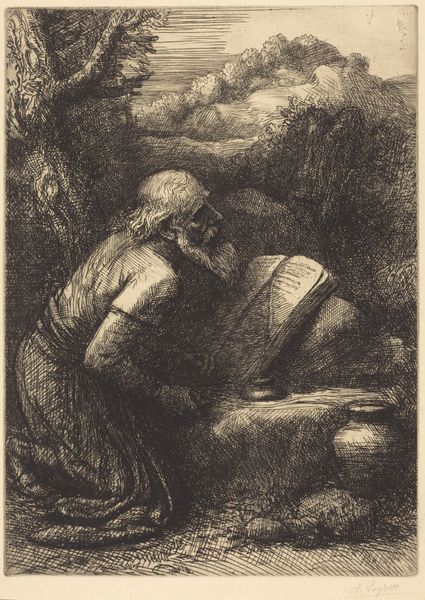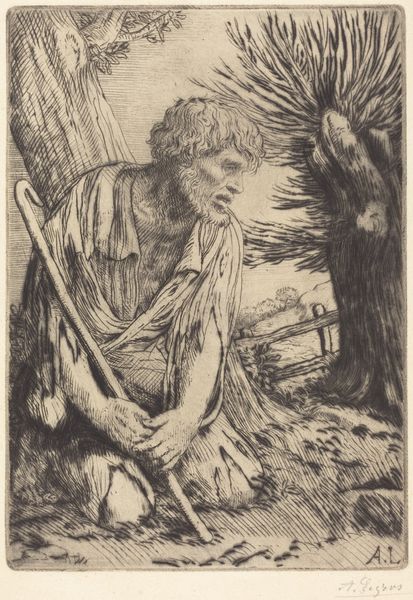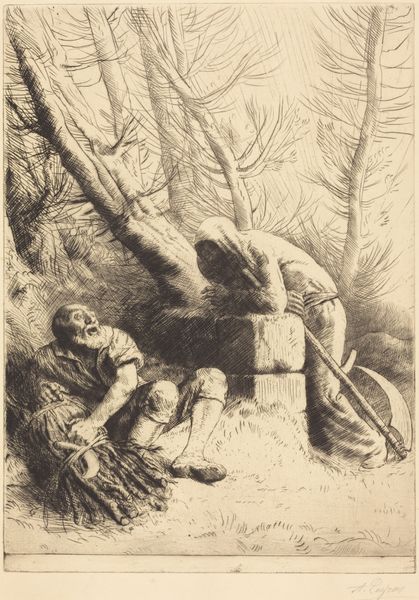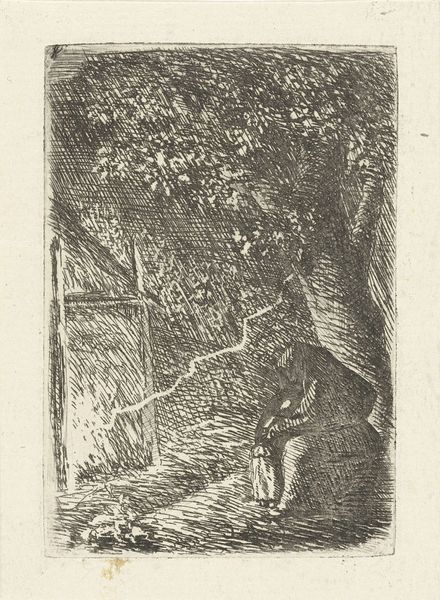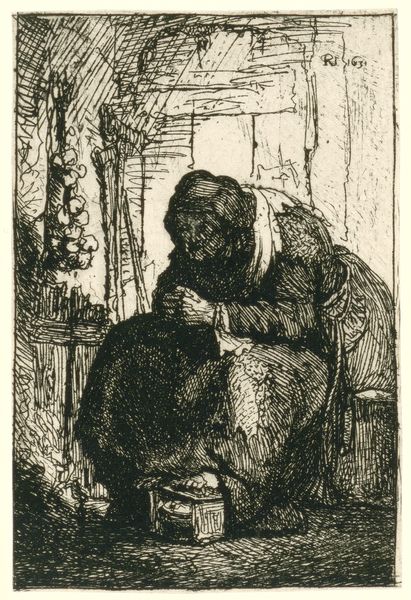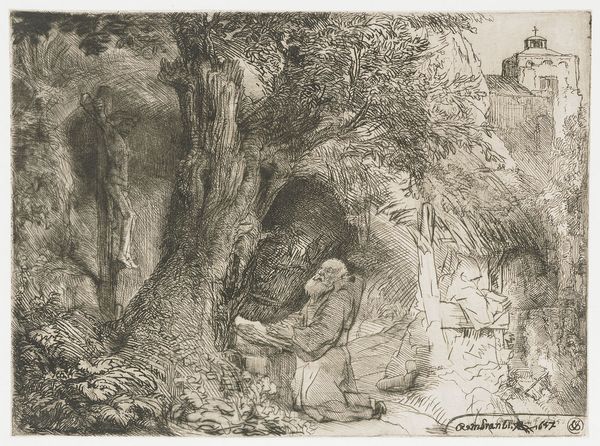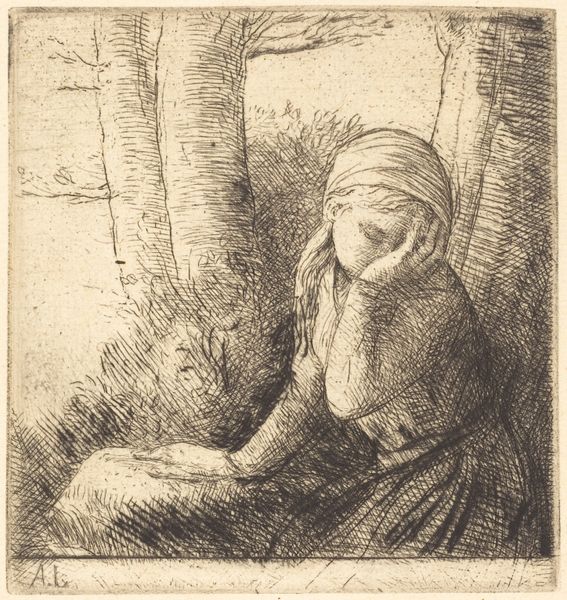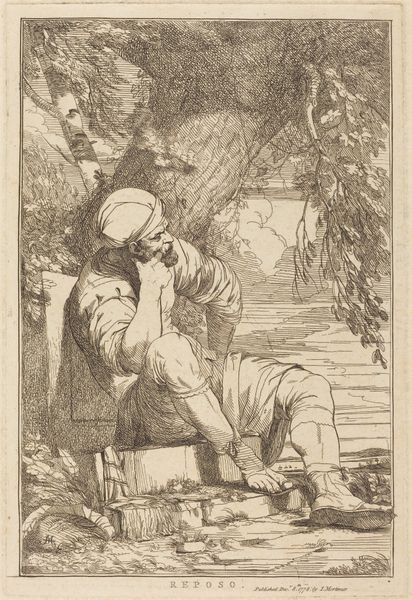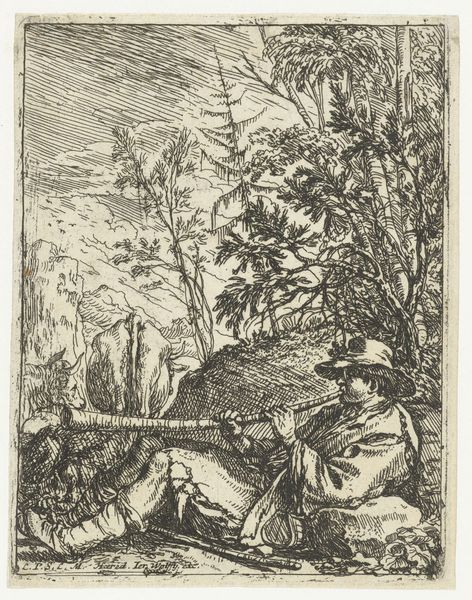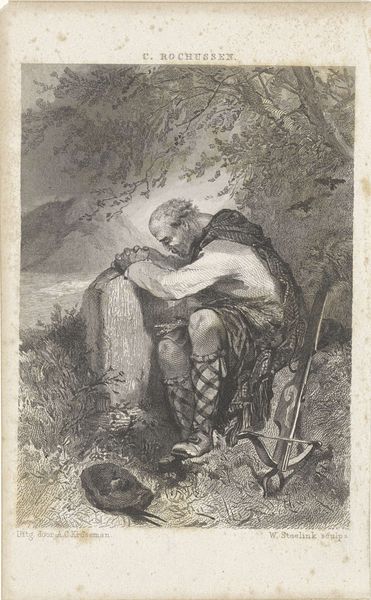
#
amateur sketch
#
light pencil work
#
pen sketch
#
pencil sketch
#
old engraving style
#
personal sketchbook
#
pen-ink sketch
#
sketchbook drawing
#
pencil work
#
sketchbook art
Dimensions: height 99 mm, width 68 mm
Copyright: Rijks Museum: Open Domain
Curator: Here we have "Monk in a Cave" by David van der Kellen, created sometime between 1814 and 1859. It's currently held at the Rijksmuseum. My immediate reaction is drawn to the hatching technique. What stands out to you? Editor: There is a pensive mood hanging over it, wouldn’t you agree? It’s this shadowy space with what appears to be a lone figure, juxtaposed with the heavy symbolism. It invites contemplation about the weight of religion, or perhaps escape into dogma. Curator: Note the use of line and texture here; how it all directs the eye and defines the volumes of forms. We see meticulous lines defining form through contrasting directional hatching. Take the monk for instance. The dense layers give weight and three dimensionality to the garment and to his sitting form. The composition utilizes a clear foreground, middle ground and background division that suggests perspectival depth. Editor: Yes, and doesn't it strike you how the imagery is suggestive of mortality, juxtaposed with what looks like verdant new growth? It's evocative of societal changes; where established religious institutions faced critique from shifting world views brought by nascent industrialization. There’s commentary about faith amid modernity. Curator: From a structural perspective, I find myself appreciating the compositional balance. The cave mouth provides an arched frame and a visual counterpoint to the figure of the monk himself. Editor: It reads to me like an allegorical painting; an insular figure within a secluded setting symbolizes a societal problem: the separation between dogma and reason in the Age of Enlightenment. Curator: Yes, I see how that resonates with the symbolic structure. David van der Kellen utilizes cross-hatching beautifully to achieve shadow, lending emotional gravity while creating form and depth within a structured design. Editor: Well, by situating “Monk in a Cave” in its historical context, we unveil a reflection on intellectual transformation amid established power structures. The monk's withdrawal hints at a more widespread reassessment of society's guiding principles. Curator: So, in scrutinizing this piece, one perceives the harmonious interplay between structural execution and symbolism. A formal design underlies an intricate interplay. Editor: A narrative emerges within a visual construction about faith, doubt and evolution that invites further analysis when situated in its era.
Comments
No comments
Be the first to comment and join the conversation on the ultimate creative platform.
